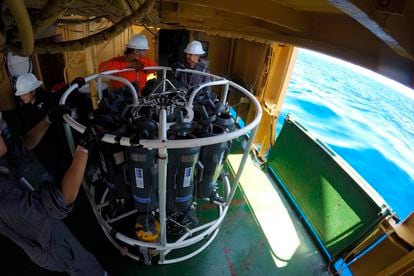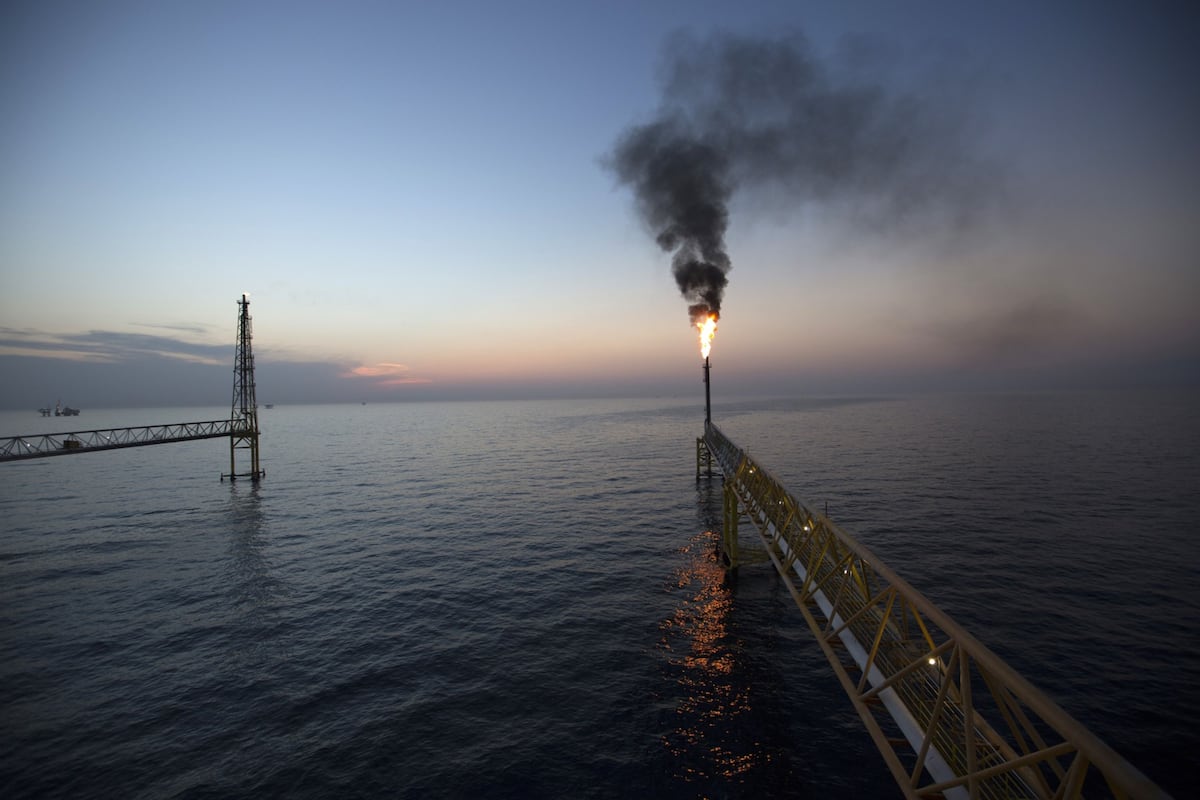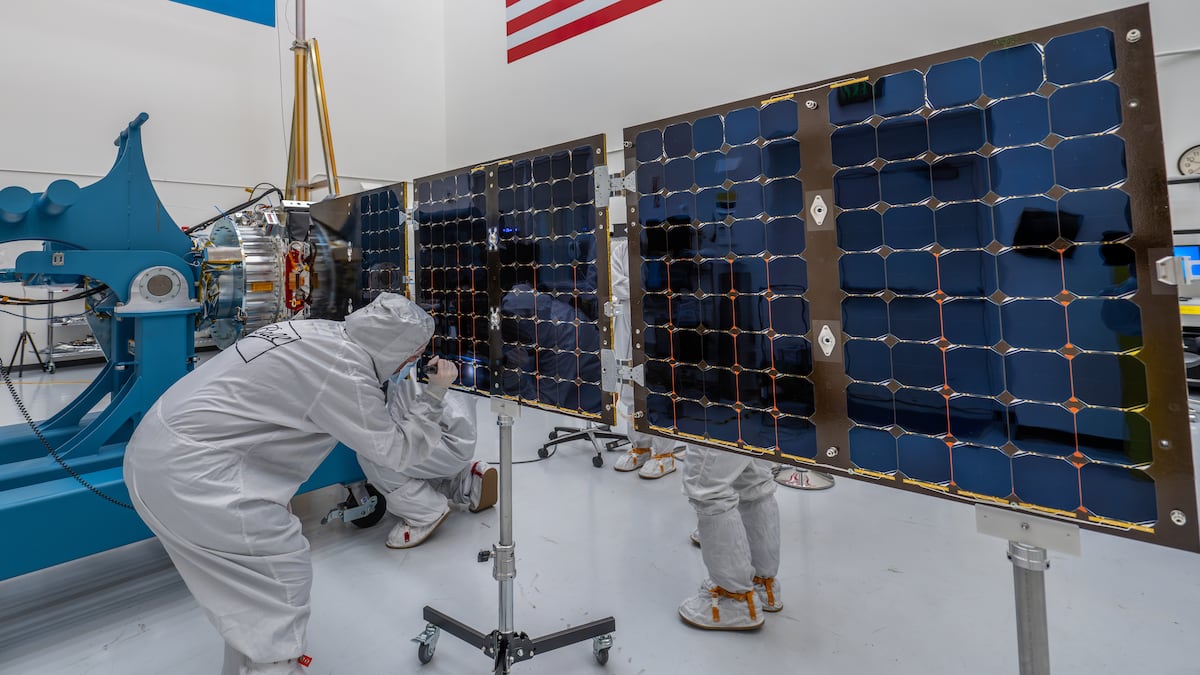On April 10, 2010, less than 50 miles off the coast of Louisiana, an explosion destroyed the Deepwater Horizon oil rig, killing 11 people and causing more than three million barrels of crude oil to spill into the Gulf of Mexico during almost three months.
The spill of crude oil in US waters set off alarms among the Mexican authorities.
What would happen if a similar oil spill occurred that affected the Mexican part?
With this question on the table, Mexico opened a call to attract specialists who could respond to concerns about the natural degradation of hydrocarbons and about the physicochemical characteristics of Mexican waters.
The Mexican project had the previous findings of US researchers, who had already discovered a group of marine bacteria with great potential to degrade oil.
The indications both in the North American country and in other waters that had suffered similar spills opened the door to explore the Gulf of Mexico and find out if there were similar marine bacteria and, if so, examine their particular qualities.
However, a specific study on the effects of the oil spill in Mexican waters was lacking.
The oil catastrophe in Louisiana was the turning point that led to the formation of the Gulf of Mexico Research Consortium (CIGoM) in 2015. “The authorities considered that there could eventually be another spill.
The more drilling there is, the risk increases,” says Alexei Licea Navarro, part of the research consortium made up of more than 300 scientists from the project to characterize bacteria and marine currents in the Gulf of Mexico.
Thus, researchers in the country took on the task of looking for samples of marine bacteria at depths of more than 3.00 meters.
After five years of navigating the area throughout more than 40 expeditions, this group of scientists has managed to characterize these unique bacteria and find out the speed at which they degrade crude oil, according to its type and condition.
The search and characterization of bacteria that "eat oil" has required the joint effort of the Institute of Biotechnology (IBt) of UNAM, the Autonomous University of the State of Morelos and Cinvestav Mérida.
The parastatal Petróleos Mexicanos (Pemex) has been in charge of providing researchers with different samples of the hydrocarbons they exploit from the Gulf of Mexico to carry out biodegradation tests.
The specialist explains that currently, in the event of an oil spill, dispersants are used, a kind of chemical detergent that dissolves the stain.
On the contrary, the marine bacteria that they have characterized organically degrade oil and even its derivatives, for example, plastics.
“We have these bacteria ready to be able to offer a service, especially to Pemex, or to any oil company that requires it so that, if there is a spill and it depends on the type of oil that was spilled, then use the specific bacterial consortia to carry out the biodegradation ”, affirms the expert.
Members of the research consortium that characterized the bacteria in the Gulf of Mexico. COURTESY
The results of these analyzes have made it possible to map the exploitation areas, analyzing marine currents and the existence of fauna and bacteria.
According to Licea Navarro, there are areas with few degrading bacteria and a large number of marine mammals, so it is not convenient to exploit them, unlike those other points where there are more bacteria and less fauna, which would be strategic in the event of an oil spill.
At the request of Pemex, the work of these researchers was extended for 18 months, during which time the statistical value of the analyzes was strengthened.
"With this type of study, you can even determine where it is more convenient to drill and where it is not convenient due to the risk that this represents, this has a national impact," he says.
One of the main objectives, adds the specialist, is to reduce the damage of an oil spill in nature.
According to his studies, traces of oil are still found in places where there is no presence of this type of bacteria, even though the spill occurred more than two decades ago.
The project in its initial five years was funded by the Government, with a capital injection of around 1,500 million pesos from the Hydrocarbons Fund Conacyt Secretariat of Energy (Sener).
Even with the recent oil spill in Peru last January — more than 11,900 barrels of crude oil affecting more than 20 beaches — the specialist emphasizes the need to promote bioremediation in the face of future disasters.
The scientist says that once the analysis of the collected samples is completed, the last step of the project will be to seek investors to acquire the technology needed to produce and store large banks of these Mexican marine bacteria, ready to eat the oil from the depths. from sea.
subscribe here
to the
newsletter
of EL PAÍS México and receive all the informative keys of the current affairs of this country


/cloudfront-eu-central-1.images.arcpublishing.com/prisa/KBZLUQ5BWNBNBFOHTOUOOJ3KUI.jpg)



/cloudfront-eu-central-1.images.arcpublishing.com/prisa/W3H32IH2DBCPRBEVTMH3MKVBNI.jpg)







